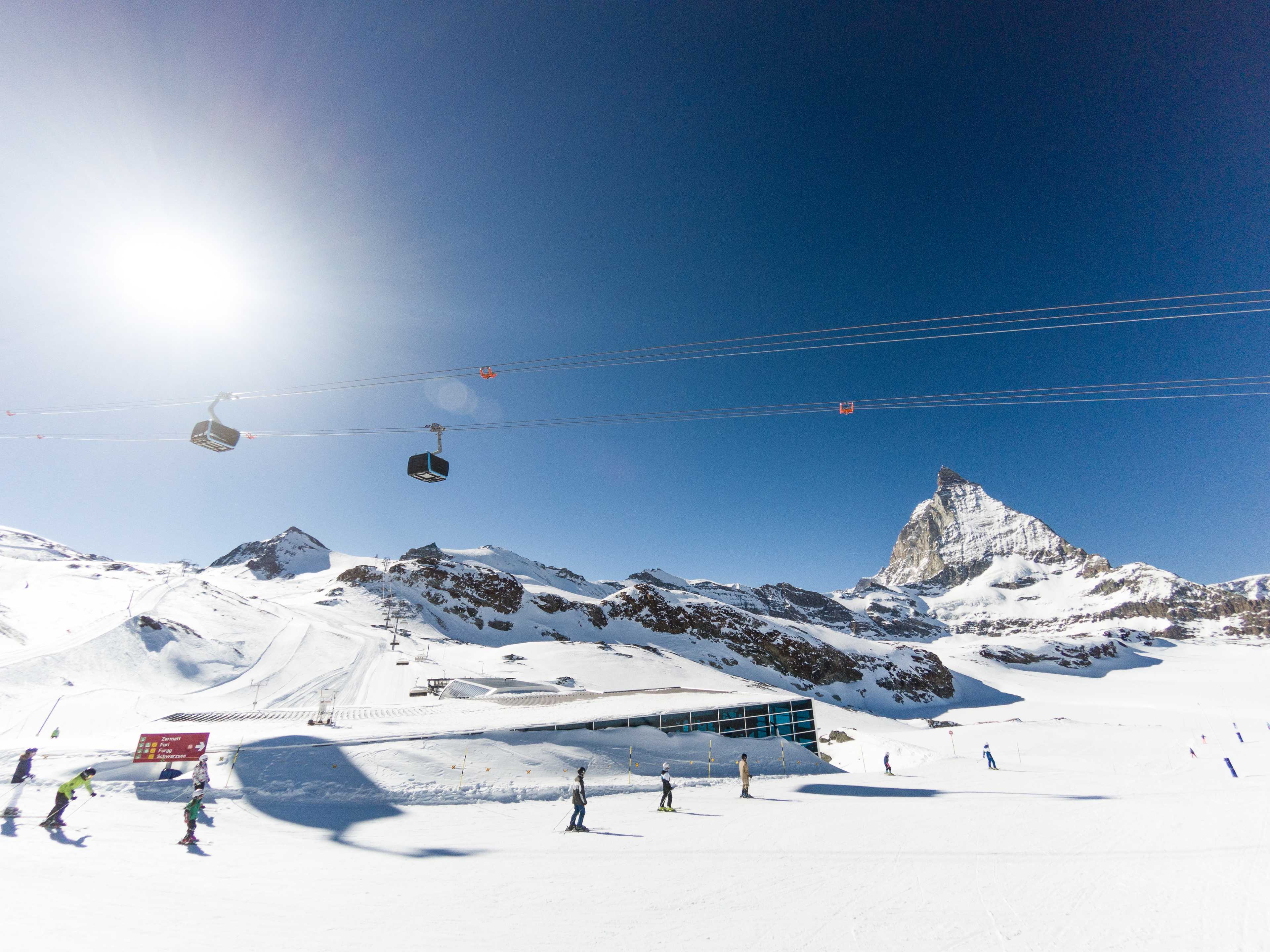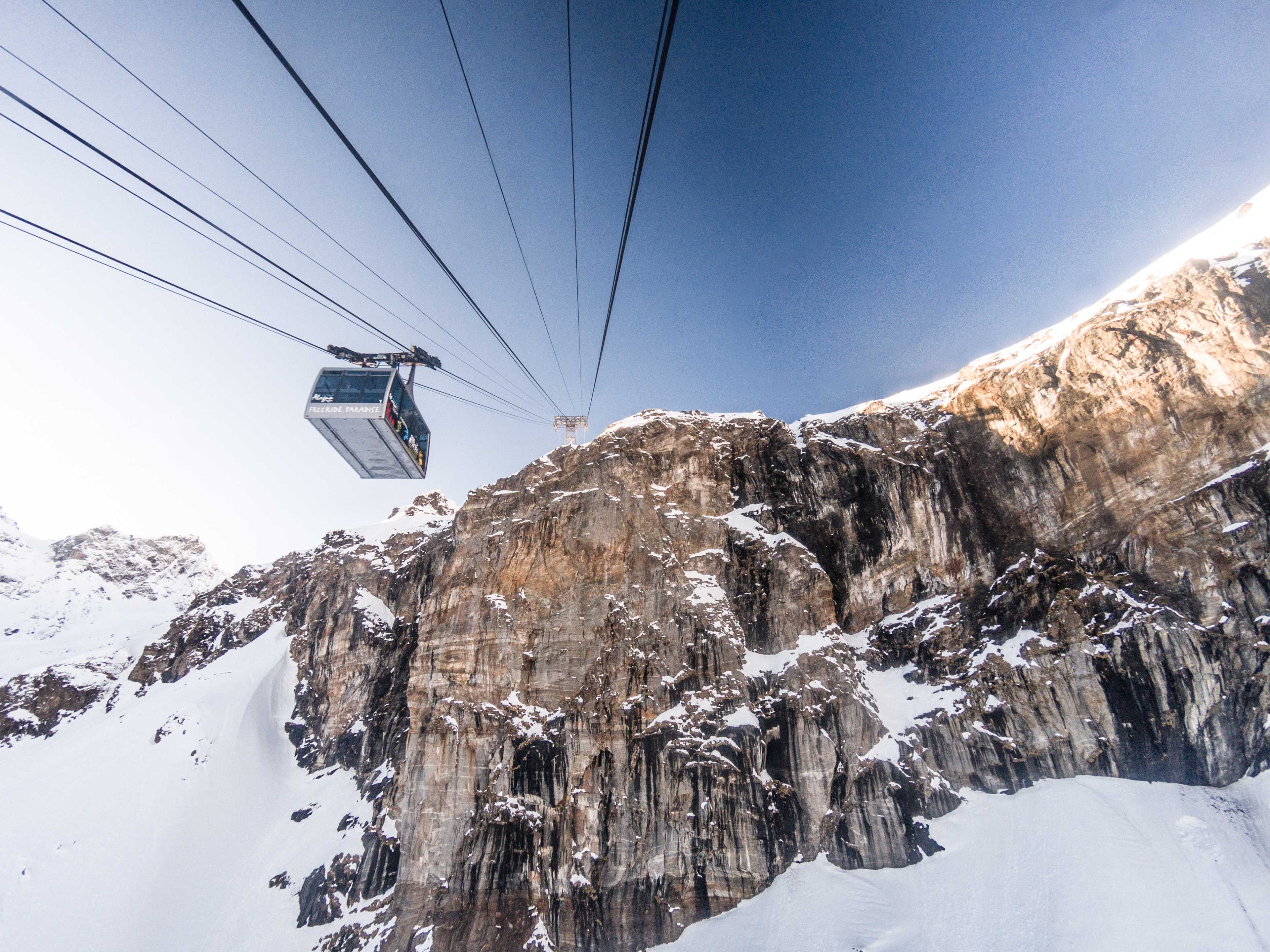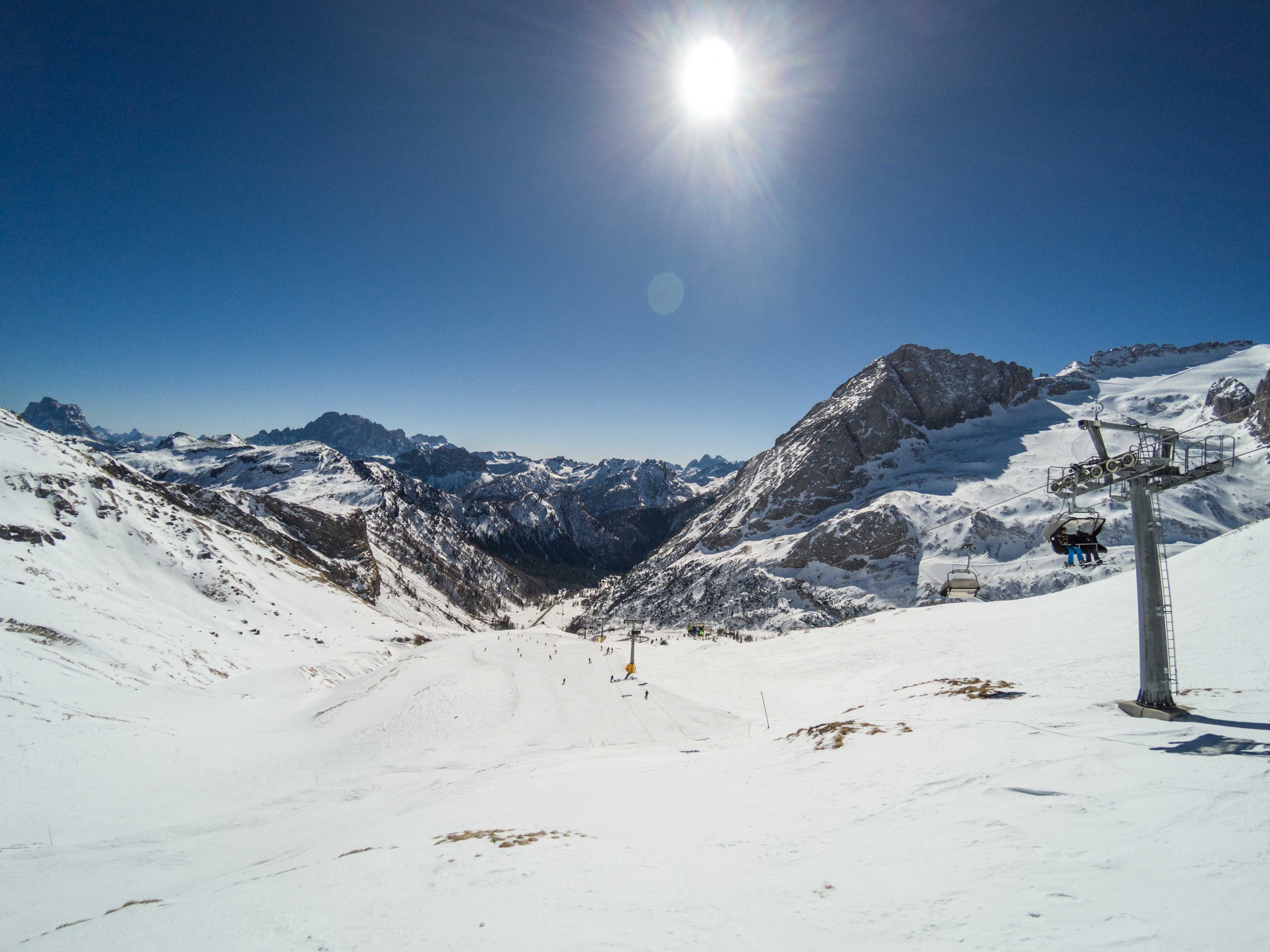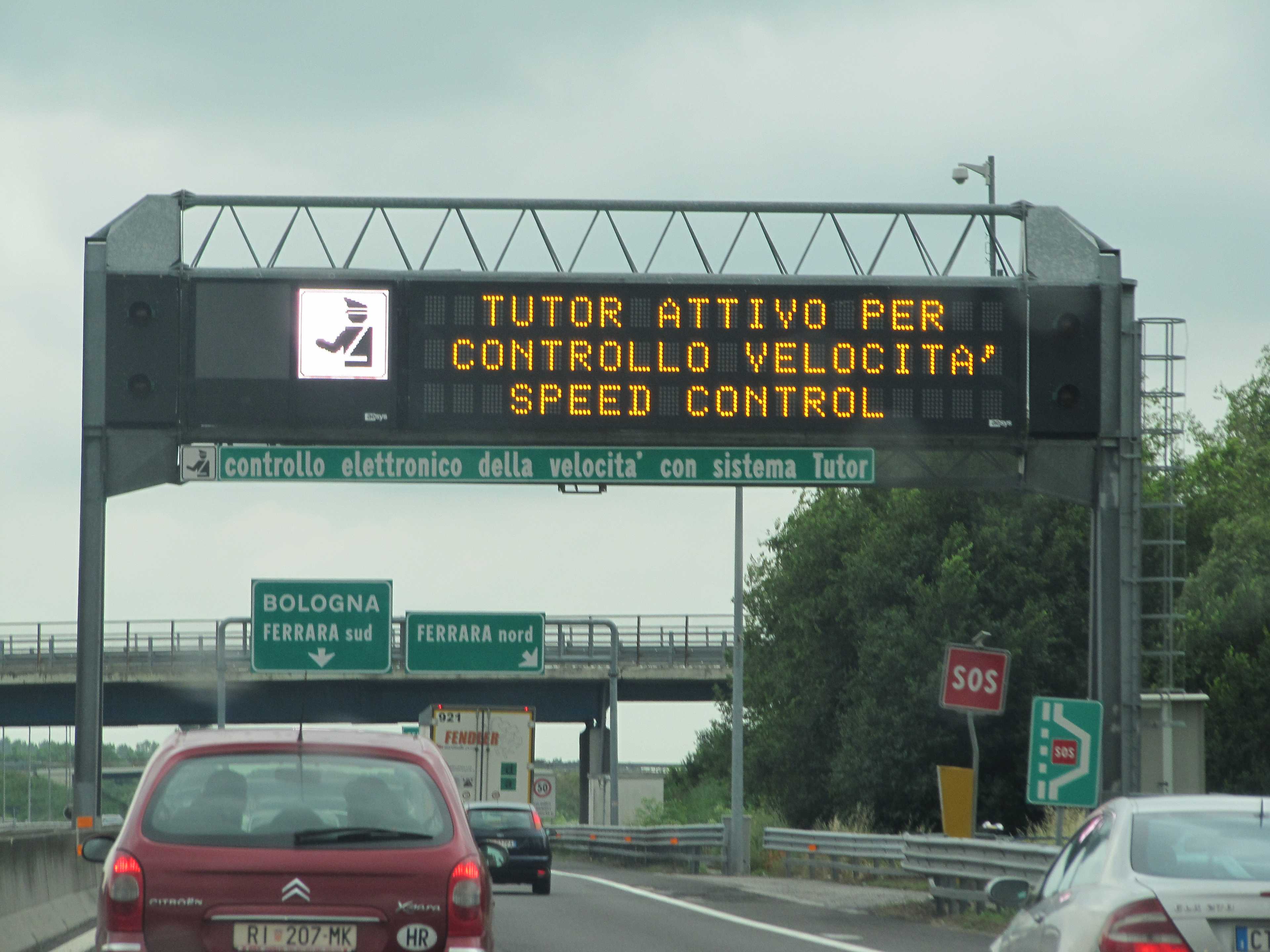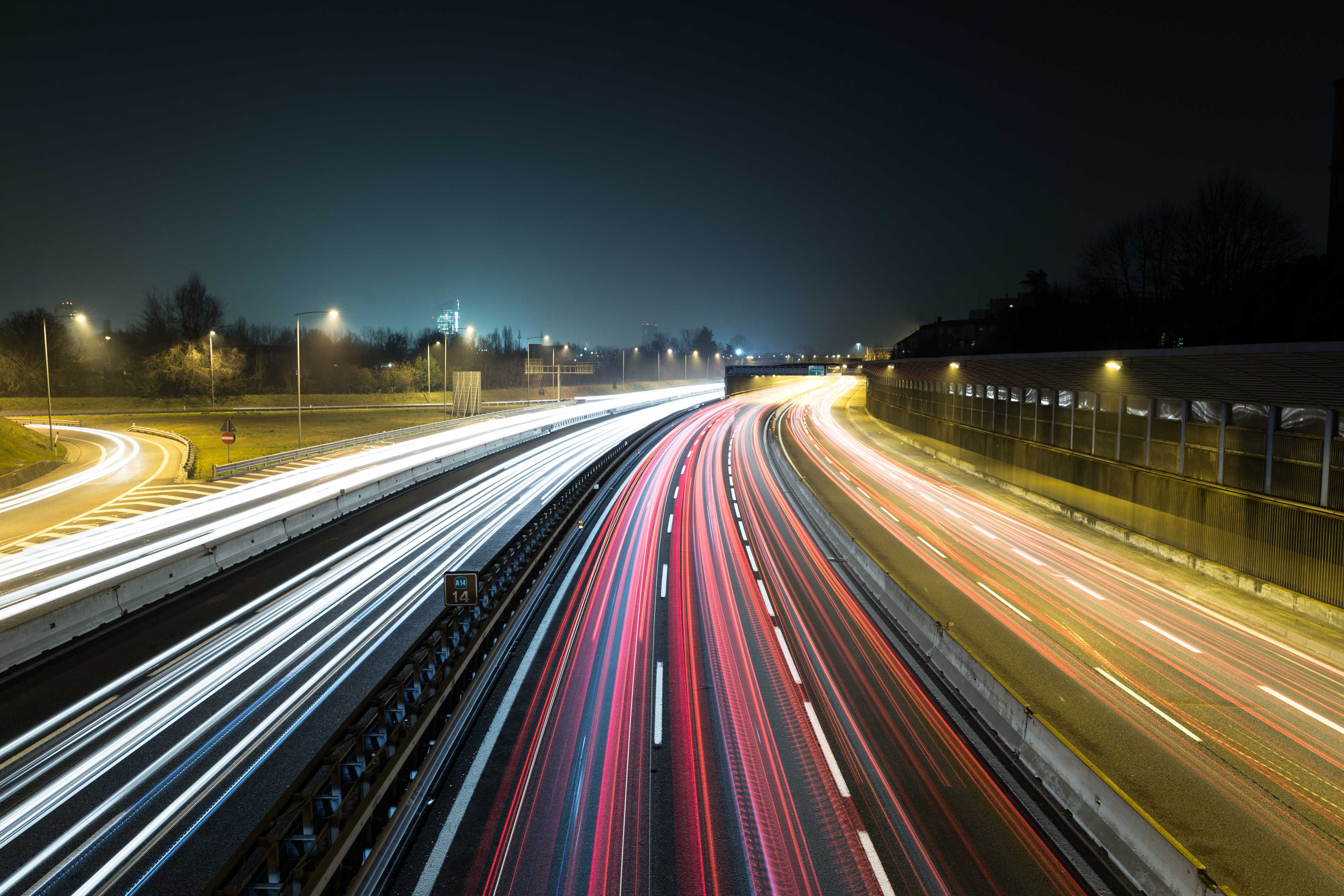Tackling Italian driving. Guide
Italy is a destination for both winter and summer vacations. Due to the presence of a large part of the Alps and the vast ski infrastructure provided there, it is a frequent choice for a winter trip. Many of us still head out by car to enjoy winter sports. We will try to make such a trip less stressful and inconvenient.
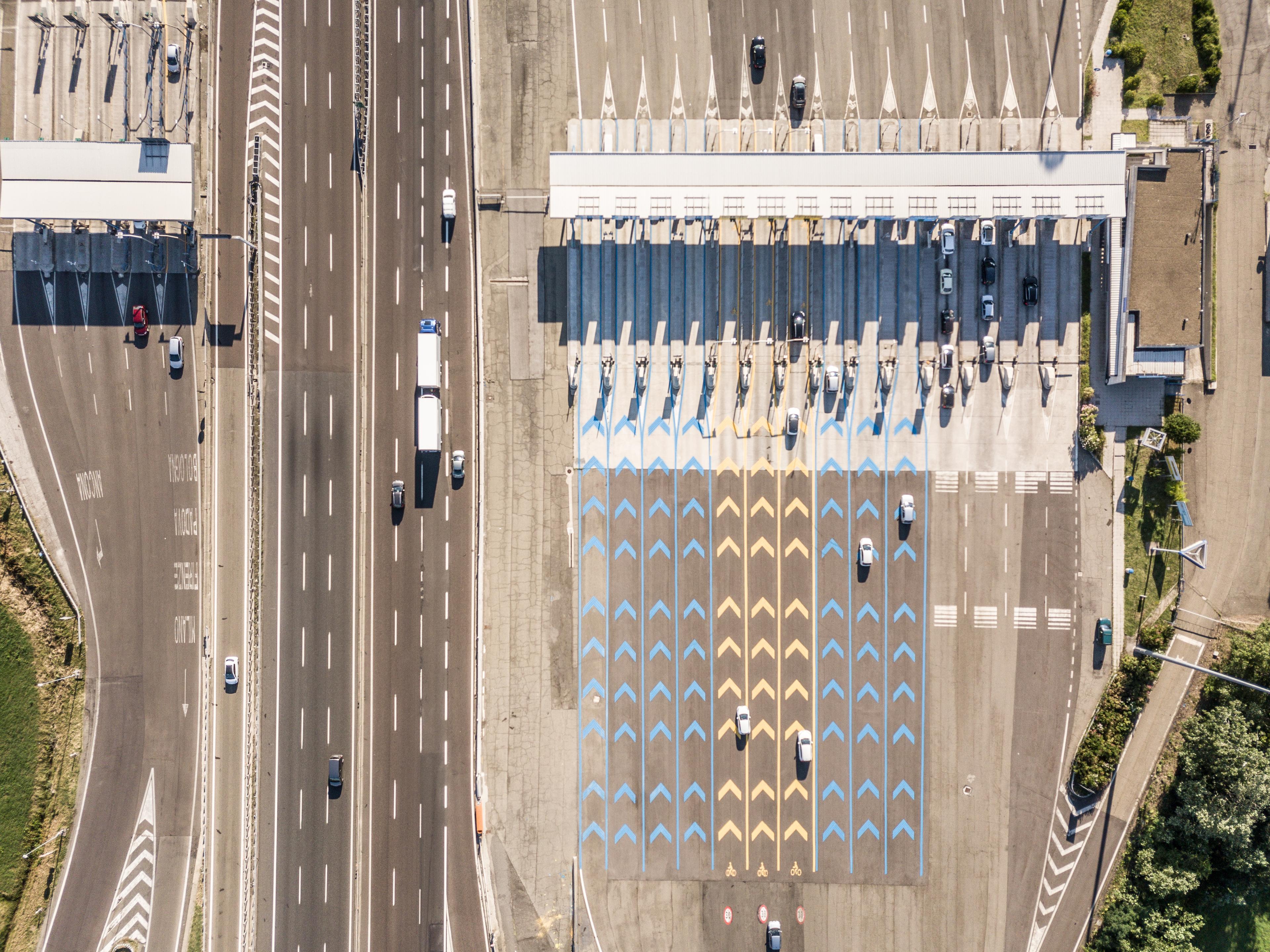
Road tolls
Italy has one of the most extensive highway networks. The highways are mostly toll roads, with toll collection taking place at the toll plazas. The system is tight and, with a few exceptions, payment is based on the ticket collected at the entrance. When leaving the highway, you give back the ticket and the toll is calculated depending on the type and length (!) of the car and the number of kilometers traveled separately in mountainous (including bridges, tunnels) and lowland areas. As of 2017, for a car over 1.5m in length, prices per kilometer for mountain and lowland areas are €0.086 and €0.073, respectively. You can calculate the fee using calculator. For example, the section of the A22 from Austria to the Val Gardena exit costs only about €4, but the Milan-Saint Vincent (Aosta Valley) section is already more than €20. When paying for the highway, we suggest carrying cash. Despite the information about commonly accepted Visa and Mastercard, of the 4 cards I tested, 2 worked (2018). The situation has improved over the years and as of 2023 even contactless cards are supported. If you are at a self-service toll station and don't have cash, you can contact the staff via intercom and ask (in Italian) to open the gate after receiving a bill to pay at the service desk (Punto Blu) later. The system records the license plate numbers and will refer the case to the appropriate authorities if payment is not made. On highways, we will also encounter Telepass gates marked in yellow. This is an electronic toll collection system recently made compatible with other systems across Europe. If you already have the device, feel free to use this entrance. These gates often have no barriers and also photograph vehicle license plates to guard against abuse.
Some Alpine tunnels (including the one under Mont Blanc) are also subject to additional fees, but these are exceptions. The vast majority of tunnels (including very long ones) are free.
In addition to highways, particularly in Lombardy, many centers will be reached using national roads (SS designation and road number). Many of these, known as superstrade, do not deviate significantly from the highway standard, and travel on them is free.
The A36 toll highway (Autostrada Pedemontana Lombarda) north of Milan deserves special attention. This is the only highway in Italy (as of 2023) that does not have toll booths. The toll must be paid online within 15 days of driving. Failure to do so will result in a fine. Many drivers are unaware of this obligation, and displays and signs usually inform them in Italian.
Winter tires and chains
In winter, our car must be fitted with winter tires or have wheel chains on board. These requirements are imposed regionally, which means that depending on the region of Italy, different variations of this rule apply. This is informed by road signs, but then of course it's too late ;).
In Trentino - Alto Adige (including Val di Fassa, Madonna di Campiglio, Cortina d'Ampezzo), where the main "ski" highway A22 is located, winter tires or chains are required when snow is already on the road or precipitation is forecast. The same is true in Friuli - Venezia Giulia, where the A23 road passes through the Adriatic Alps.
In Lombardy (e.g. Livigno, Bormio, Monterosa), the obligation to have winter equipment is defined by dates - from November 15 to April 15, and here it doesn't matter whether we encounter snow on the road or not.
In the Aosta Valley (including Cervinia, La Thuile), it is worth noting other dates for the necessity of winter tires - the winter season here starts from October 15 and lasts until April 15.
Speed checks
Italy has some of the toughest fines in Europe for speeding. As a member country of the European Union, it has access to a traffic information exchange system. Once a speeding ticket is caught, we can be sure that the fine will reach us, and if we fail to pay, it will be referred to local law enforcement authorities.
On highways, in theory, a maximum speed of 150 km/h is allowed, but none (as of 2023) has decided to introduce such a high speed. So, as a general rule, we should drive a maximum of 130 km/h on highways. On expressways 100 km/h, and on national roads 90 km/h. In built-up areas, the 50 km/h limit applies (unless there is another limit specified by a sign).
Some highways (including the A4 leading from east to west along the Alps and the A23 through Udine) are equipped with the Tutor section control system. This state-of-the-art solution measures the average speed of our vehicle using cameras placed on gantries every few kilometers. The system is designed to prevent manipulation of the average speed by, for example, stopping and subsequently breaking the rules. Tutor is usually built on very long stretches or, sometimes, even entire highways. These are not selective sections of road as in Austria, the Czech Republic or Germany. All sections equipped with the Tutor system are marked, and there is appropriate information on each gantry.
In addition to Tutor, Autovelox speed controls can be found on highways and national roads in northern Italy. These are traditional speed cameras. It is worth mentioning that the only information about their presence is directly on them. Thus, there is no prior information about the expected speed camera. Autovelox are older devices, and some of them are not equipped with flashing lights.
On local and regional roads, local authorities also place speed cameras (mostly in built-up areas). These are often marked with a prior warning. Although these warnings pop up here and there and in most cases there's no actual speed check afterwards.
Police checks are quite common in Italy - especially in areas with speed limits. It is worth mentioning that officers often do not speak English.
Restricted traffic areas (ZTL)
ZTL (zona traffico limitato) is a restricted traffic area. Watch carefully for signs announcing this zone. Restrictions sometimes apply to certain types of vehicles (e.g., no buses or trucks). Most often, however, especially in city and town centers, they apply to all vehicles. Signs announcing ZTLs are extremely illegible boards, in front of which you sometimes have to stop to understand what they are even about. Some ZTL zones are also time-limited and it is possible to enter them at night, for example.
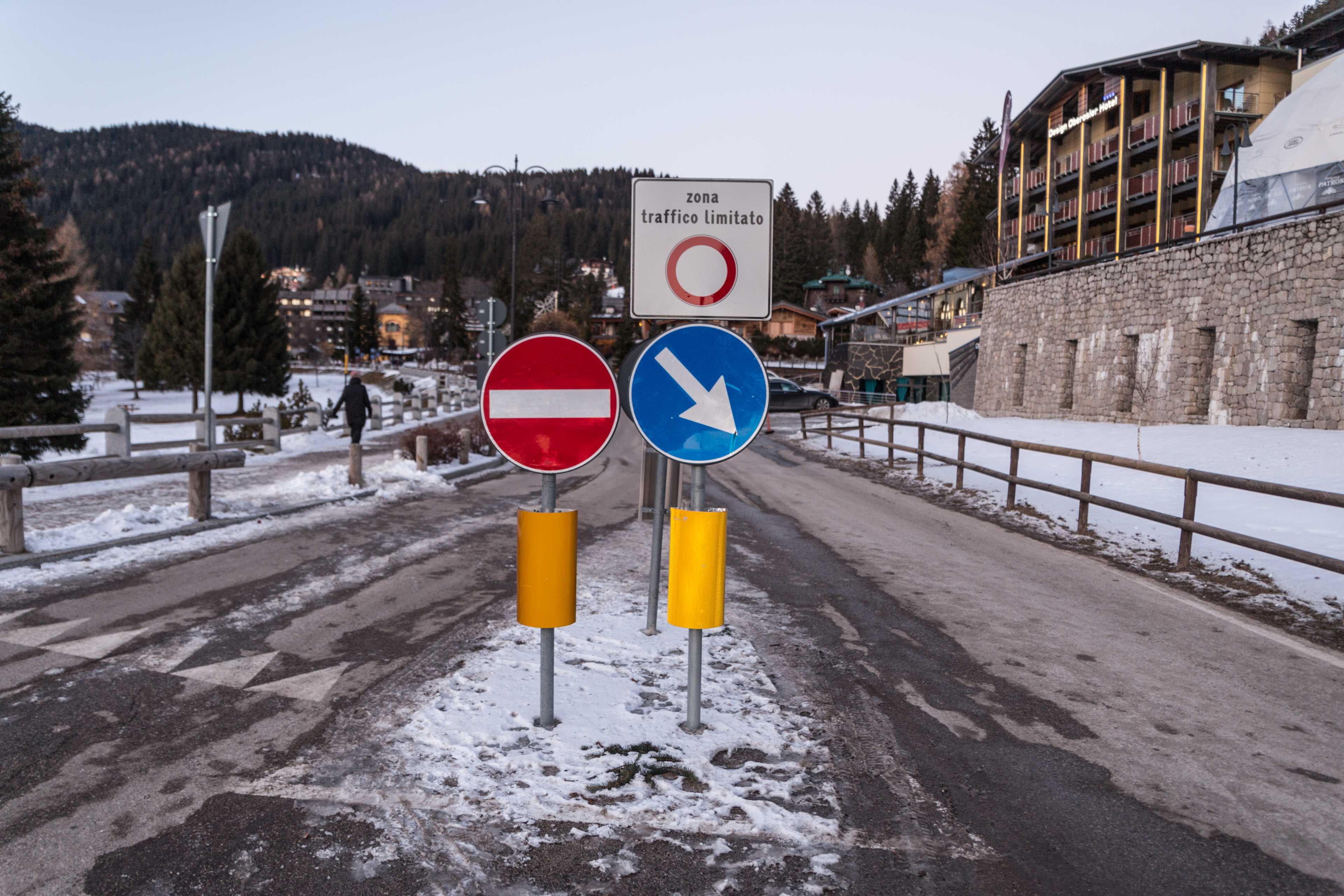
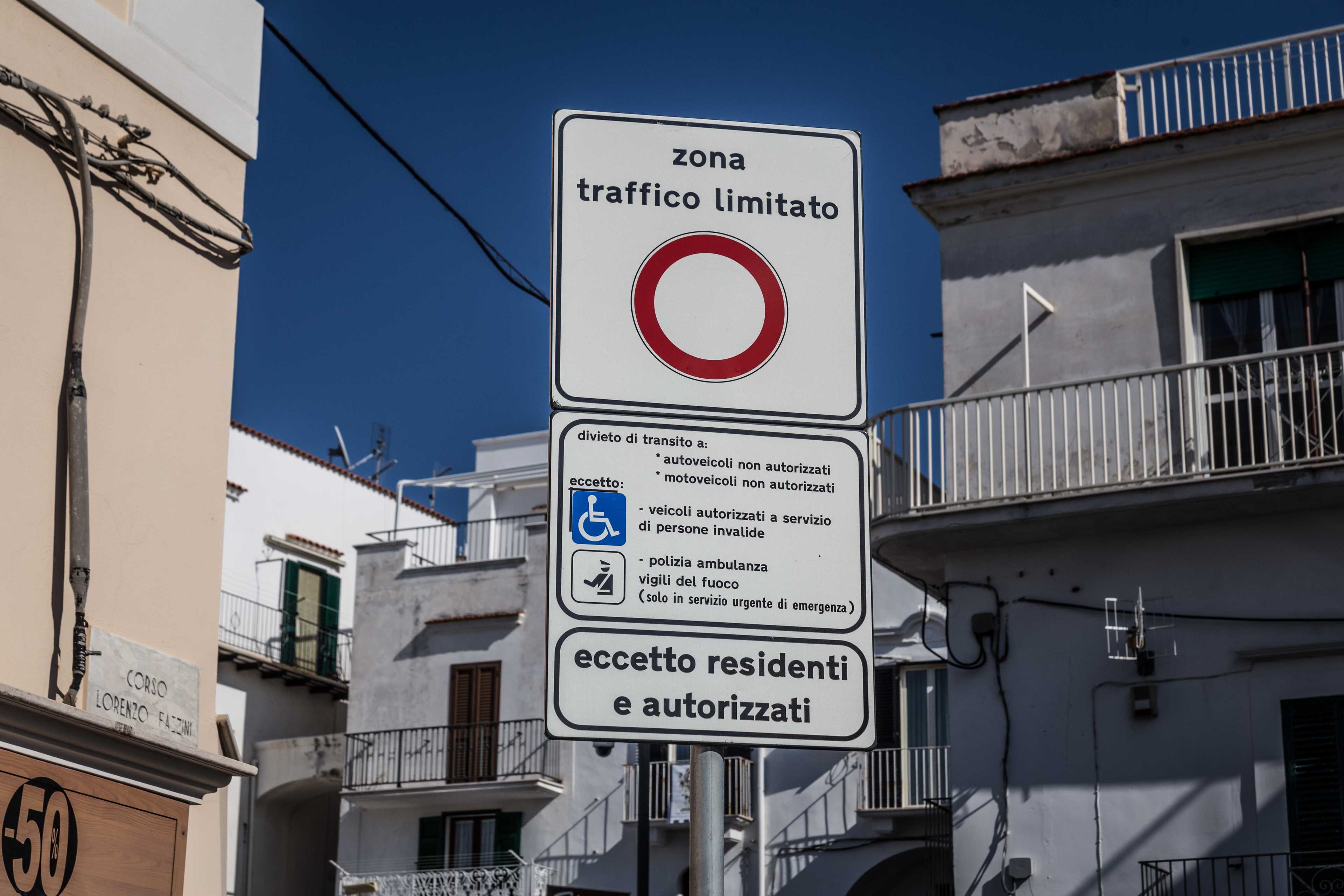
ZTL zones are monitored by municipal police and by complex camera systems. Sometimes these systems are automated and, like speed cameras, fines are automatically generated.
Some ZTL zones can be entered after buying a ticket (and sometimes reporting license plate numbers to an Italian hotline). Some hotels located in ZTLs also register guests' cars (in such cases they ask for license plate numbers before arriving).
Unauthorized entry into the ZTL is punishable by a fine of varying amounts depending on the policy of the local authorities. Typically, it is an expense of about €50 per offense.
ZTL zones are usually the historic centers of cities and towns. In the case of ski resorts, these are central parts, mostly designated for pedestrian traffic - basically every resort has its own ZTL zone and it is clearly marked. It's worth reading the signs, as the ZTL zone may apply only to a specific type of vehicle (e.g., no entry for buses) - in which case, under the ZTL sign, there is a drawing of vehicle types not authorized to enter.
Parking
An extensive and well-prepared tourist infrastructure awaits in Italy. Public parking lots can sometimes be expensive, although in ski resorts a day's parking should not exceed €5, and sometimes parking is completely free.
In towns and cities, publicly accessible on-street parking spaces are marked with colored lines. Traditional paid parking lots are marked in blue. We should expect to find a parking meter in the area (sometimes really far from the place). The cost of an hour of parking depends on the location - typically ranging from €1 to €2.40. Sometimes, in popular areas, parking is also paid on Sundays and at night. Parking is paid for with coins, and it is sometimes possible to pay by card, but here, like on highways, we may face a declined transaction. Blue lines also sometimes indicate time-limited parking. Then the sign indicates how long we can leave the car for (e.g. 1 h max). Behind the windshield we should have a special cardboard with a rotating clock face, with which we mark the time of parking.
White lines, on the other hand, mark public free parking spaces. However, it is necessary to pay attention to the accompanying road signs. Sometimes these spaces are intended only for residents of a particular estate (solo residenti), in which case you are not allowed to park on them. Sometimes other restrictions are possible (e.g. only for customers of a store or guests of a hotel).
Yellow lines are spaces reserved for special privileges. Most often these are places for the disabled, but here, too, pay attention to the accompanying road signs.
Petrol stations
The fuels available in Italy are the same as in the rest of Europe. Usually there are no bioadded fuels, and both gasoline and diesel are sold in two variants (normal and premium). Petrol stations themselves, on the other hand, are a completely different world ;)
An interesting thing is that we have to add about €0.20 per liter to the price of fuel if we use staff service. The price board shows "self" and "servizio" prices for self-fueling and using staff service, respectively. For some stations without a checkout building, payment is made directly to the staff standing at the station with a purse (and sometimes a POS).
While driving on highways, we can easily refuel our car at more modern gas stations. Here we will usually pay by cash and card, but fuel prices are sometimes higher than market prices. The difference in price is €0.10-0.30 per liter, the price of which is already one of the highest in Europe.
In the case of national and local roads, it happens that petrol stations resemble "zombies." They are neglected facilities, often completely without any staff. Sometimes, too, the staff only shows up during business hours - something like 8:00 a.m. to 1:00 p.m. and 2:30 p.m. to 5:00 p.m. Self-service stations are equipped with a device into which we insert banknotes and, in theory, payment cards. Often these devices do not give change (!) if we do not refuel the full amount paid. Instead, we get a receipt, with which we can report to the staff (once the staff is in place) or go to a designated address to retrieve the change.
At unmanned stations, we often won't pay by card, even if there is a POS (no support for smart cards, transmission problems, etc.). This can be a hassle, so we should always have cash set aside for this purpose. Over the years the situation has improved, but be prepared - you've been warned ;).
Despite the peculiar vibe, the quality of fuel at network stations is not substandard, and we should rather not be concerned about the health of our vehicle.
Driving habits
Cars with Italian license plates drive in a rather distinctive manner. The Italian driving style is extremely dynamic in narrow streets and built-up areas. Therefore, let's not be worried if someone honks at us as we are looking for a parking space. Let's pay attention at traffic lights, as a red light will cause the most speeding car to stop at all costs. This is the side effect of cameras frequently installed to record red light runs. Let's also watch out for pedestrians - in Italy it is common not to respect the red light at a pedestrian crossing. Pedestrians will also easily step out onto the roadway when the designated crosswalk is not there.
On the highways, on the other hand, Italians are extremely peaceful. This is due to widespread concern about the presence of speed cameras and the Tutor system.
It is also worth mentioning the obligation to turn on daytime running lights. Observing locals, one could swear that such a law does not apply here, but this is purely the negligence of drivers. Just as in the rest of Europe, we should have the lights in the car on 24 hours a day, regardless of the season. We should also be equipped with a reflective vest.
Italian law is quite liberal when it comes to driving under the influence of alcohol. The legal limit is 0.05% alcohol in exhaled air. In practice, breathalyzer checks are very rare, and as a result, drivers are again quite liberal about it.
Surviving
Driving in Italy can be enjoyable and stress-free, as long as we are properly prepared for it. First of all, let's remember to have some cash. Always and everywhere. Anyways, not only for driving. In winter, let's bear in mind to have winter tires and chains. Before setting out, let's take a peek at a map, because road signs can seem really illegible and sometimes we can find on them every information but the name of the town we are heading to. So let's familiarize ourselves with the local topography of the region we are traveling to. On signs, towns will always be marked in blue, and regions (including tourist regions) in brown.
Handy tools to keep you informed about speed cameras and section controls are mobile apps such as Waze (full GPS navigation that informs you about speed checks and other events) or Tom Tom Speed Cameras (an excellent database of speed cameras and section controls) available for iOS and Android. Both require a continuous Internet connection, which should not be a problem since free roaming has been introduced in the European Union. Using such apps in Italy is completely legal.
From us, we wish you a pleasant journey through one of Europe's most beautiful countries.
Update (05.09.2018): Clarification of regulations on winter equipment, addition of paragraphs on ZTL, new photos
Update (27.09.2023): Information on fees, stylistic corrections
Read also
